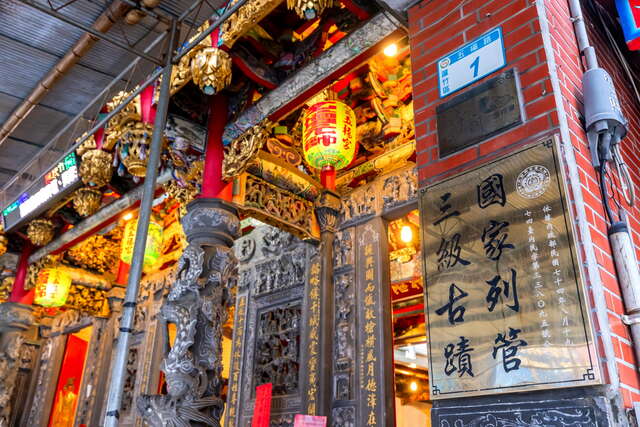Nankan Wufujiao Temple Introduction
Nankan Wufugen Temple, located in Luzhu District, Taoyuan City, is one of the oldest temples in Taoyuan, with a history of over three hundred years. This temple is not only a center of local faith but also a treasure that integrates history, art, and culture. If you are interested in Taiwan's traditional architecture, religious culture, or seeking a boost in wealth, this is definitely a must-visit place! Step back in time and enter the century-old Wufugen Temple, which was established in 1661 and has been protecting local residents since the time of Koxinga. It has undergone numerous repairs and expansions and is now designated as a city historic site. Entering the temple, you can almost feel the traces of time, with an atmosphere of history surrounding you; every stone carving and every beam tells stories from Taiwan's early days. Admire the beauty of traditional craftsmanship. In addition to its appeal in faith, the architectural artistry of Wufugen Temple is truly stunning! The stone carvings at the main entrance are exquisite, showcasing the superb skills of traditional craftsmen, while the carvings of the chi (winged dragon) and lion on the beams are lifelike. Whether it’s openwork, relief sculptures, or three-dimensional carvings, every detail is worth savoring, making it feel like stepping into a museum of carved art. "Tiannu" praying for wealth. The "Tiannu" within Wufugen Temple is another highlight; unlike ordinary incense burners, the design of the Tiannu is more solemn, allowing devotees to sincerely pray and transform their wishes into a wisp of smoke to convey to the deities. It is said that sincere worship at the Tiannu can bring wealth and blessings to oneself and one's family, making this a sacred place for many merchants and entrepreneurs to pray. If you wish for smooth business and abundant wealth, visiting here is definitely the right choice! Immerse yourself in Taiwan's authentic religious festivals. Visiting Wufugen Temple is not just a cursory glance; there are vibrant religious events throughout the year! The "Wuchaizhen Cultural Festival" in the third lunar month is the most notable, featuring lively prayer rituals and folk performances that transport you to a traditional cultural carnival. Additionally, the Zhongyuan Pu Du Festival in the seventh lunar month showcases Taiwan's unique faith culture, allowing you to experience a festive atmosphere unlike any other. The mysterious "Shizhe Gong Snake Cave." When mentioning Wufugen Temple, one cannot miss the unique "Shizhe Gong Snake Cave." Here, the golden snake, regarded as a messenger of the deities, is worshipped. It is said that these snakes are very spiritual and often appear both inside and outside the temple, viewed as protective messengers of the God of Wealth. For travelers who love mysterious legends, this is a special must-see site! At Wufugen Temple, bring home both wealth and blessings. Nankan Wufugen Temple is not only a place of faith but also a cultural landmark full of stories and beauty. Whether you come to feel the charm of the historic site, admire traditional craftsmanship, or participate in vibrant festivals, this place will meet your travel expectations.









































